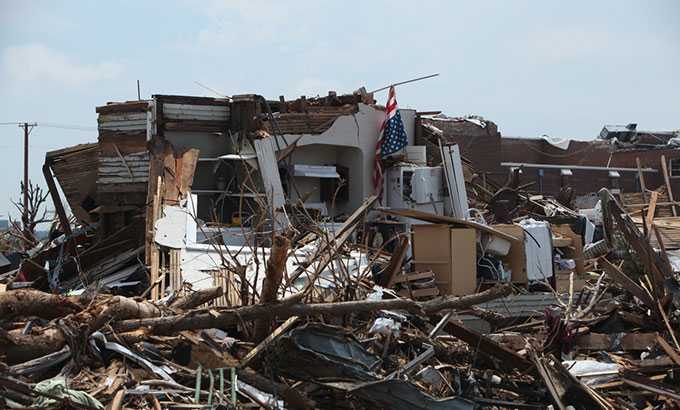Tornado in Joplin, Missouri
On May 22, 2011, an EF-5 tornado carved a four-mile path through Joplin, MO. Two thousand buildings, including a major hospital, were damaged or destroyed. The Missouri Department of Health and Senior Services (DHSS) activated the PHEP-funded State Emergency Operations Center and Emergency Response Center to integrate public health into the emergency response and, in collaboration with its partners, lead and coordinate the public health and healthcare sectors.
DHSS tracked 713 individuals who were injured during the tornado and evacuated them to 42 hospitals in four neighboring states. Local health departments leveraged existing partnerships with health departments in other states to provide mutual aid services, such as supplying and administering tetanus vaccinations to responders and residents, and notifying neighboring states of incoming evacuees from the Joplin area.
Before the tornado, Joplin health officials had developed a plan for simplifying healthcare delivery and reimbursement in emergency circumstances. This system enabled healthcare providers to continue to provide care when traditional systems were overwhelmed and ensured that responders were compensated in a timely manner. Additionally, per the plan, providers had previously instructed dialysis patients to create an emergency three-day care plan, which they were instructed to implement following the 2011 tornado.
The state also provided a variety of services that not only ensured health services were available, but that residents had access to them. DHSS deployed the state’s Mobile Medical Unit, which established a 24-bed emergency room that treated 157 patients. PHEP-funded behavioral and mental health response plans directed mental health professionals to provide care at family assistance shelters. The health department conducted door-to-door checks on residents and addressed medical needs, such as prioritizing ventilator-dependent patients for power restoration.
DHSS assisted local public health authorities and environmental staff in childhood lead surveillance and prioritized lead contaminated property clean-up. They also disseminated information to healthcare facilities and neighboring states to foster early identification and treatment of patients exposed to fungal infections and directed equipment and supplies to reduce mosquito-borne diseases.

In May 2011, an EF-5 tornado devastated Joplin, MO
The Incident
On May 22, 2011, an EF-5 tornado destroyed 2,000 buildings, including a hospital, in Joplin, MO.
The Response
DHSS tracked 713 individuals who were injured and evacuated them to 42 hospitals. They provided care for dialysis and ventilator-dependent patients, and reduced lead exposure and fungal and mosquito-borne disease.
The Outcomes
With efficient communication among partners, public health staff were able to provide ongoing healthcare and prevent other health threats.
- Page last reviewed: May 1, 2017
- Page last updated: May 1, 2017
- Content source:


 ShareCompartir
ShareCompartir